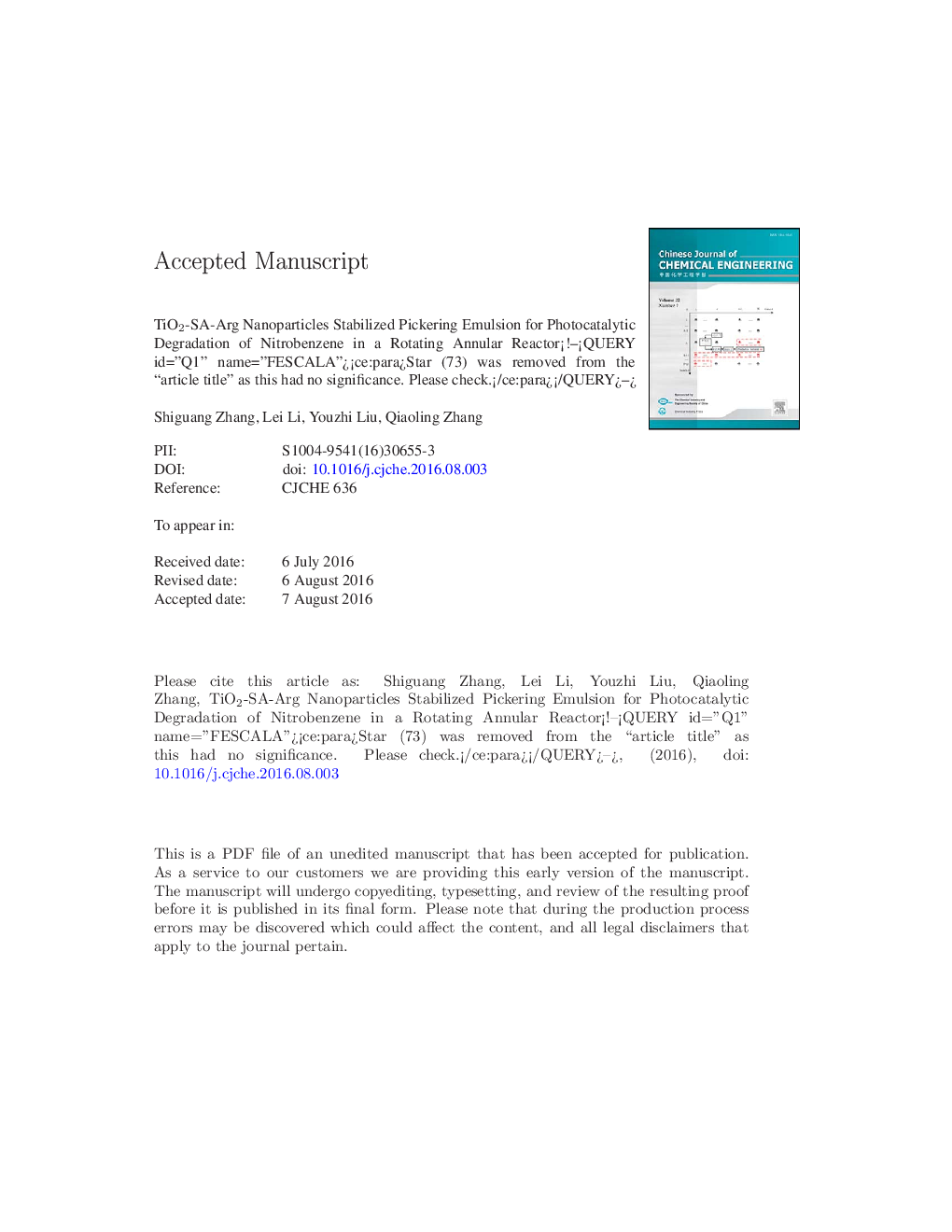| Article ID | Journal | Published Year | Pages | File Type |
|---|---|---|---|---|
| 4764138 | Chinese Journal of Chemical Engineering | 2017 | 24 Pages |
Abstract
Pickering emulsions stabilized by salicylic acid and arginine modified titanium dioxide (TiO2-SA-Arg) nanoparticles were prepared in this study for photocatalytic degradation of nitrobenzene in a rotating annular reactor, and the effects of various design parameters of the rotating annular reactor, initial nitrobenzene concentration, catalyst amount, and solution pH on the degradation rate of nitrobenzene were investigated. Meanwhile, the degradation mechanism of nitrobenzene was proposed. The results show that increasing the aeration rate, the rotational speed, and light intensity results in a higher photocatalytic degradation rate of nitrobenzene owing to the effective clearance of electrons and a high quantity of oxidative free radicals. The degradation of nitrobenzene in the rotating annular reactor follows the pseudo first-order kinetics, but it is not well described by the Langmuir-Hinshelwood equation. Aeration has a significant effect on the photocatalytic degradation pathway of nitrobenzene. Because nitrobenzene can undergo reduction reaction as electron acceptors and oxidative degradation initiated by hydroxyl free radicals, the photocatalytic degradation of nitrobenzene follows the reduction mechanism under no aeration, but the oxidation mechanism under aeration.
Related Topics
Physical Sciences and Engineering
Chemical Engineering
Chemical Engineering (General)
Authors
Shiguang Zhang, Lei Li, Youzhi Liu, Qiaoling Zhang,
